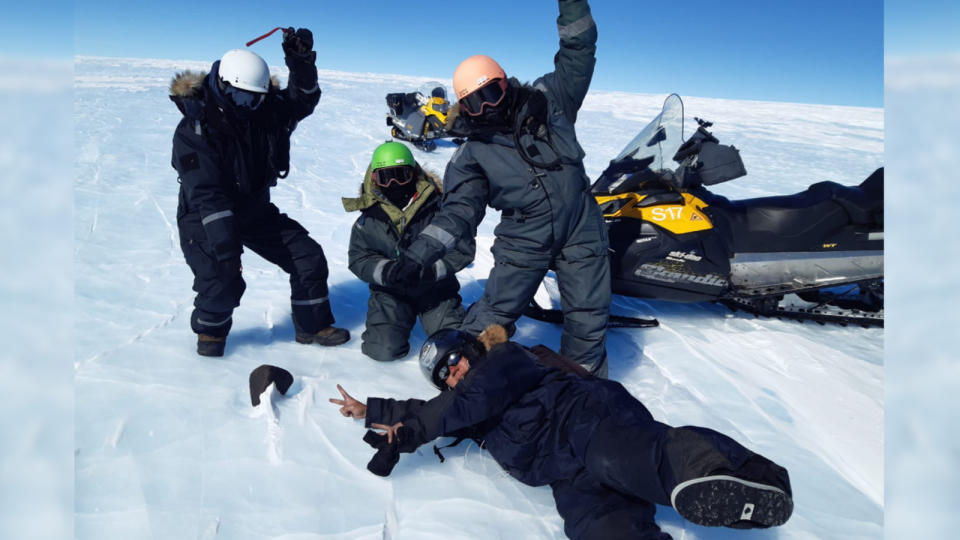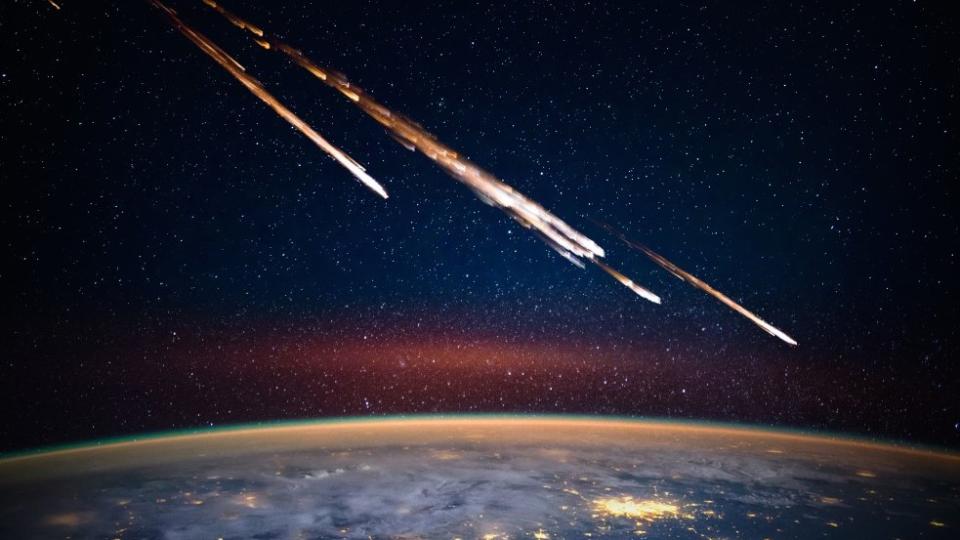17-pound meteorite found in Antarctica, likely hidden for millennia, is perfectly intact


Scientists recently scooped up one of the heaviest meteorites ever discovered in Antarctica, as well as four other frozen space rocks that likely crashed into the icy continent thousands of years ago.
The researchers found the minihoard of meteorites on the surface of the Nils Larsen blue ice zone near the Belgian-owned Princess Elisabeth Antarctica station. Of the five meteorites, the standout was a cantaloupe-size rock that weighed a whopping 16.7 pounds (7.6 kilograms). Of the 45,000 meteorites discovered in Antarctica, only around 100 have been as heavy as this cosmic cannonball.
"Size doesn't necessarily matter when it comes to meteorites, and even tiny micrometeorites can be incredibly scientifically valuable," expedition scientist Maria Valdes, a meteoriticist at the Field Museum in Chicago, said in a press statement. "But of course, finding a big meteorite like this one is rare, and really exciting."
Related: Mars meteorite that crashed to Earth contains 'huge diversity' of organic compounds
The meteorites were found on the surface of the ice in early January, but they did not crash to Earth recently. Instead, the space rocks were likely buried in the ice for thousands of years and resurfaced only after the churning motion of glaciers brought them back to the surface. But because the meteorites were shielded from precipitation, wind and air beneath the ice, they were still perfectly intact, according to the researchers.

"The objects come from the asteroid belt [located between the orbits of Mars and Jupiter] and probably plopped down into the Antarctic blue ice several tens of thousands of years ago," expedition scientist Ryoga Maeda, a doctoral student at the Free University of Brussels, told Belgian news site The Brussels Times.
Normally, scientists have to scour the ice sheets in hopes of stumbling across a meteorite. But the researchers were able to narrow down their search thanks to a study published Jan. 26, 2022, in the journal Science Advances, which used satellite data and a type of artificial intelligence called machine learning to identify parts of Antarctica where meteorite clusters were more likely to be brought to the surface. It was in one of those hotspots that the newfound meteorites were discovered.
But even with a specific location to search, it still took a lot of hard work to find the meteorites. "The reality on the ground is much more difficult than the beauty of satellite images," lead expedition scientist Vinciane Debaille, a geochemist at the Free University of Brussels, said in the statement.

The team covered a large area, which was strewn with other non-meteorite rocks of similar shapes and sizes. The researchers were constantly fooled by "meteor-wrongs," which looked similar to space rocks but were much lighter and originated on Earth, CNN reported.
Related: How many meteorites hit Earth every year?
The meteorite samples collected during the expedition have been sent to the Royal Belgian Institute of Natural Sciences in Brussels to be properly thawed and analyzed, but each expedition scientist also took back samples of potential meteorite dust, which they collected from around the fallen space rocks, for their own research, according to the statement.
RELATED STORIES
—Never-before-seen crystals found in perfectly preserved meteorite dust
—Astronomers plan to fish an interstellar meteorite out of the ocean using a massive magnet
—Two minerals never seen before on Earth found inside 17-ton meteorite
The expedition was the first to search one of the potential meteorite hotspots highlighted by the 2022 satellite study. The team's success suggests that the study could be used by other researchers to recover even more frozen meteor fragments. In the study, researchers estimated that as many as 300,000 meteorites could lie in wait on the surface of the ice, meaning only around 15% have been recovered to date.
The expedition team hopes more meteorites can be found to help us learn more about our cosmic neighborhood.
"Studying meteorites helps us better understand our place in the universe," Valdes said. "The bigger a sample size we have of meteorites, the better we can understand our solar system, and the better we can understand ourselves."
